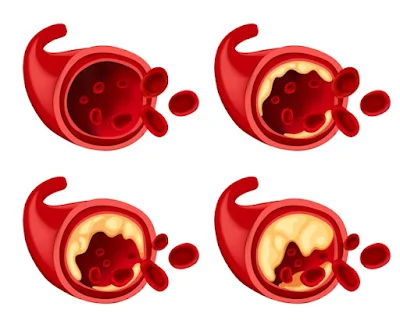Arteries play a crucial role in maintaining overall cardiovascular health. These blood vessels carry oxygen-rich blood from the heart to various parts of the body. It is essential to keep arteries healthy to prevent the development of conditions such as heart disease and stroke. In this guide, we will explore the importance of maintaining healthy arteries and provide effective strategies to achieve this goal.
Understanding Arterial Health: The Basics
 |
| Image Credit Goes To Freepik |
Arterial health is a key factor in maintaining overall cardiovascular health. Arteries are responsible for carrying oxygen-rich blood from the heart to different parts of the body. When arteries become clogged or damaged, it can lead to serious health problems such as heart disease and stroke. Understanding the basics of arterial health is crucial for taking proactive steps to maintain and improve it. In this guide, we will delve into the fundamentals of arterial health and provide valuable insights on how to keep your arteries in optimal condition.
Lifestyle Changes for Healthy Arteries
 |
| Image Credit Goes To Freepik |
Making certain lifestyle changes can greatly contribute to maintaining healthy arteries. One of the most important steps is adopting a balanced and nutritious diet. This means incorporating plenty of fruits, vegetables, whole grains, and lean proteins into your meals while limiting the intake of saturated and trans fats, cholesterol, and sodium. Regular physical activity is also crucial for arterial health. Engaging in aerobic exercises, such as brisk walking, jogging, or cycling, can help improve blood flow and strengthen the heart. Additionally, quitting smoking and reducing alcohol consumption are essential for maintaining healthy arteries. Finally, managing stress levels through techniques like meditation, deep breathing exercises, and engaging in hobbies or activities that bring joy and relaxation can also contribute to overall arterial health. By implementing these lifestyle changes, you can take proactive steps towards maintaining healthy arteries and reducing the risk of cardiovascular diseases.
The Role of Diet in Arterial Health
 |
| Image Credit Goes To Freepik |
Diet plays a crucial role in maintaining healthy arteries. Consuming a balanced and nutritious diet can help prevent the buildup of plaque in the arteries, which can lead to blockages and increase the risk of cardiovascular diseases. Incorporating foods that are rich in antioxidants, such as fruits and vegetables, can help reduce inflammation and oxidative stress in the arteries. Whole grains, such as oats and brown rice, are also beneficial as they contain fiber that helps lower cholesterol levels. Additionally, including lean proteins, such as fish and poultry, can provide essential nutrients without adding excessive saturated fats. It is important to limit the intake of saturated and trans fats, cholesterol, and sodium, as these can contribute to the development of arterial plaque. By making conscious choices about the foods we consume, we can support arterial health and reduce the risk of cardiovascular diseases.
Exercise and Arterial Health: Finding the Right Balance
Regular exercise is another key component in maintaining healthy arteries. Engaging in physical activity helps improve blood flow, strengthen the heart, and reduce the risk of plaque buildup in the arteries. However, it is important to find the right balance when it comes to exercise. Too much intense exercise can actually cause stress on the arteries and increase the risk of injury. On the other hand, not enough exercise can lead to a sedentary lifestyle, which is also detrimental to arterial health. It is recommended to aim for at least 150 minutes of moderate-intensity aerobic activity or 75 minutes of vigorous-intensity aerobic activity per week, along with muscle-strengthening activities at least twice a week. It is always important to consult with a healthcare professional before starting any new exercise routine, especially if you have pre-existing cardiovascular conditions. By incorporating regular exercise into your lifestyle, you can support the health of your arteries and reduce the risk of cardiovascular diseases.
Medical Interventions for Arterial Health
 |
| Image Credit Goes To Freepik |
In addition to lifestyle changes, there are also medical interventions available to support arterial health. These interventions are typically recommended for individuals who have significant arterial blockages or are at high risk for cardiovascular diseases. One common medical intervention is the use of medications such as statins, which help lower cholesterol levels and reduce the risk of plaque buildup in the arteries. Other medications, such as antiplatelet drugs, can help prevent blood clots from forming and causing blockages in the arteries. In more severe cases, surgical interventions may be necessary. These can include procedures such as angioplasty, where a balloon is used to widen narrowed arteries, or bypass surgery, where a graft is used to create a new pathway for blood flow. It is important to consult with a healthcare professional to determine the most appropriate medical interventions for your specific arterial health needs.

Comments
Post a Comment